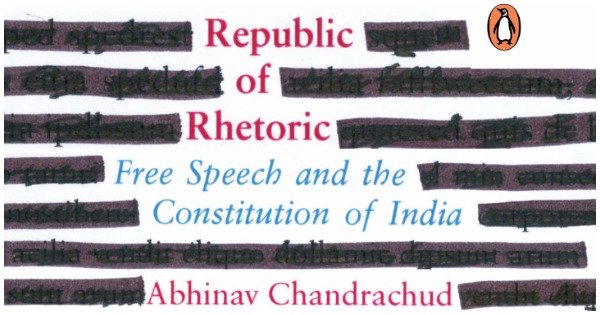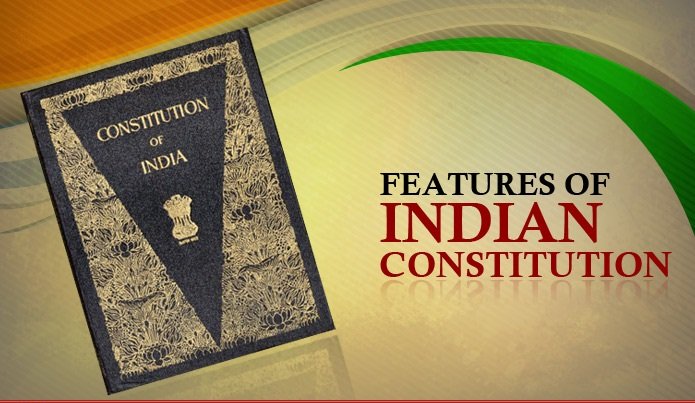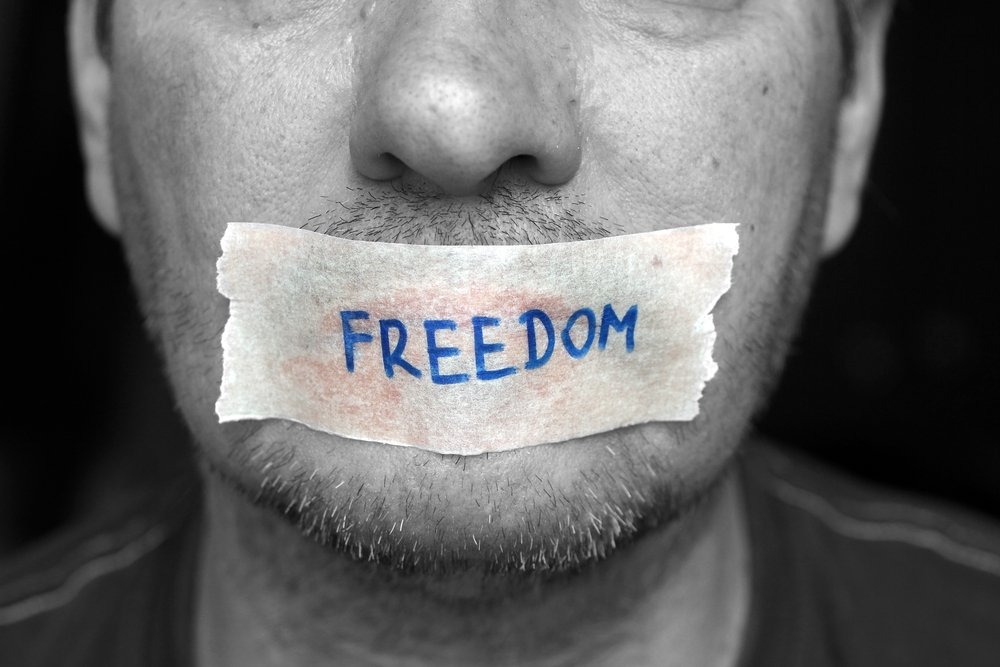At a time when most people are questioning whether our freedom of expression is at risk, Abhinav Chandrachud’s Republic of Rhetoric brings to attention that our fundamental right might not be as different from the colonial times. India’s fight to break the shackles of slavery and truly become independent was not attained on August 15, 1947. It was only after the Constitution of India was implemented on January 26, 1950, that Indians began to enjoy certain rights.
However, this book highlights that even the Constitution, which bestows the right to free speech to us, did not make any significant changes to the freedom of speech in the country since colonisation. This is primarily due to the continued imposition of restrictions such as sedition, contempt of court, and defamation, among others – provisions that have been borrowed from the laws that existed prior to Independence.

Here’s an excerpt from the book:
Chapter: The Music of an English Band
India became independent on 15 August 1947, the second anniversary of the Japanese surrender during the Second World War. On that historic day, however, India did not fully cast off her colonial chains. Between August 1947 and January 1950, India was a British dominion which, like Australia and Canada, recognized the king as her monarch and sovereign. This had not been the aim of the freedom movement whose clarion call, for decades, had been purna swaraj or complete independence, not dominion status. During this time, Indian institutions derived their power from the Indian Independence Act, 1947, a statute which had been enacted by Britain’s Parliament. Up to 1949, cases decided by the federal court, the precursor to the Supreme Court of India, could be appealed before the Privy Council in London. It was only on 26 January 1950, when the Constitution came into force, that India fully attained her independence.
It was for this reason that Ambedkar said in his famous last speech in the Constituent Assembly: ‘On 26th January 1950, India will be an independent country’. It was on this day that India became a republic which was no longer under the British monarch or Parliament. The Constitution of India made it a point to repeal the Indian Independence Act, 1947, and the Government of India Act, 1935, a powerful symbol that India no longer derived her power and legitimacy from London.

Broadly speaking, the Constitution had two competing goals; one was to transform India while the other was to keep things the same. Prime Minister Nehru believed that society had to face ‘two urges, continuity and change’, and that it had to keep these ‘evenly balanced’ in order to succeed. India’s Constitution accordingly aimed to preserve a Nehruvian balance between continuity and change. In the words of Granville Austin, the Constitution sought to bring about a ‘social revolution’, while at the same time trying to preserve ‘national unity and stability’.
On the one hand, the Constitution tried to bring about change and an unprecedented socio-political transformation in India, unlike anything we had ever seen before. For example, untouchability was formally abolished by the Constitution, and public places were thrown open to all, regardless of a person’s religion, caste or gender. In the colonial period, some Indians were often given titles like ‘Sir’, ‘Rao Bahadur’, ‘Khan Bahadur’, or ‘Dewan Bahadur’, e.g., Sir Jamshedji Kanga or Dewan Bahadur G.S. Rao. All this came to an end with the Constitution in 1950. To this day, our Constitution tells Sachin Tendulkar that he cannot accept a knighthood from the British monarch, unlike Sir Don Bradman. The Constitution sanctioned a programme of ‘reservation’ or affirmative action for historically marginalized strata of Indian society, which is why many seats in universities and government jobs in India continue to be reserved for members of backward castes and tribes. India, under the British, had been a hotchpotch of provinces and princely states. The provinces were directly governed by the British, while the princely states were ruled by Indian princes who accepted the suzerainty of Britain. Now, the Constitution consolidated all the princely states, more than 500 of them, into Indian territory, as Part ‘B’ and ‘C’ states. Perhaps most importantly, every adult Indian citizen, man and woman, was given the ability by the Constitution to vote in central and state elections, regardless of whether he or she had property or educational qualifications.

Much of the Constitution was therefore novel and unique. In fact, there was a radical legislative transformation in India after independence. British rule in India had been sustained with the collaboration of Indian princes, landlords, and upper castes (who flocked to colonial institutions like the Indian Civil Service). These three groups were penalized in independent India. Landlords lost much of their land to tenant cultivators in an ambitious programme of land reform. Princes lost their authority to rule, and eventually, their privy purses. The upper castes can compete, in many states, for no more than 50 per cent of the seats in educational institutions, because of caste-based reservations. Independence did, therefore, involve a substantial break from the past.
At the same time, however, the Constitution had another goal which sought to preserve and maintain the status quo, to seamlessly transport the political landscape of British India into India after independence. This goal embedded in the Constitution attempted to preserve stability at a time of widespread partition related rioting. Significant portions of the Constitution, e.g., the distribution of legislative powers between the Union and States, and the power to proclaim an emergency, were inspired by the Government of India Act, 1935. In the Constituent Assembly, M. Ananthasayanam Ayyangar admitted that there was ‘some truth in (the) remark’ that the Constitution was ‘a mere copy of the 1935 Government of India Act’. British-era institutions like the high courts were carried forward, and none of the judges who had served, loyally to the colonial regime, on courts like the Bombay High Court, lost their jobs in August 1947. Instead, many of them grew to be widely respected in India’s legal profession. In short, there was quite a lot in the Constitution which was designed to keep things as they were, to maintain, as some scholars say, ‘colonial continuity’. As K. Hanumanthaiya famously remarked in the Constituent Assembly: ‘We wanted the music of veena or sitar, but here we have the music of an English band.’

At its heart, the Constitution contained a chapter on fundamental rights. One of these rights was the right of every citizen in India to ‘freedom of speech and expression’, guaranteed by Article 19(1)(a) and limited by Article 19(2). It would be quite intuitive to think that this important fundamental right belonged to the transformative part, not the status-quo part, of the Constitution. After all, this was perhaps the first time in India’s history that political rights inspired by individualistic Western values, rights like the right to life, personal liberty and equality, were formally recognized in a legally enforceable constitutional document. The chapter on fundamental rights looked a lot like the Bill of Rights of the US Constitution, or the more recent Universal Declaration of Human Rights which had been adopted by the General Assembly of the UN a little over a year before our Constitution came into being.
However, a closer look at its history and evolution reveals that the enactment of the Constitution made little or no substantive difference to the right to free speech in India. Though there was no formal document recognizing a right to free speech in British India, Indians certainly did enjoy a common law right to speak freely during that time. Broadly speaking, prior to India’s independence, there were four exceptions to the right to free speech. These were: sedition (and hate speech), obscenity, contempt of court and defamation. These continued to be exceptions to the right to free speech after the Constitution was adopted, and remained virtually unchanged.
Republic of Rhetoric: Free Speech and the Constitution of India is published by Penguin Random House India. The book is available in stores across India.
(Feature image source: Penguin Random House India)

















